– I’m Kari Borne, I’m from the Office of Continuing Education at UW-Whitewater. We host the Fairhaven Lecture Series each semester and we have 10 to 12 lectures on a theme. Each semester is a new theme and again, this semester, we’re talking about The Great War, World War I. Today’s presenter is Ashley Barnes-Gilbert. Ashley is a lecturer in women’s and gender studies. She is a historian of women, gender, and sexuality in The United States. Her research explores brothels and their role in the turn of the century Southern and Midwestern river towns. She received her PhD from the program in gender and women’s studies history at UW-Madison as the George L. Mosse scholar of LGBTQ history. Ashley teaches a wide variety of courses at UW-Whitewater, including Introduction to Women’s and Gender Studies, Feminist Theories, Women, Race, and Ethnicity, and Women and Work. She has expertise in women’s and gender history and race and ethnic history of The United States. Please welcome Ashley Barnes-Gilbert.
(applause)
– Thank you so much, Kari, can everyone hear me? Is this sounding all right? Alright, wonderful, so as Kari noted, my name is Ashley Barnes-Gilbert. I’m extremely excited to be here today and share with you some of my love of women’s history. As a historian of women and gender, my chief goal is to recognize and expand the understanding of women’s history and their lives in the past. Notably, this is not always an easy task, as women’s lives have not been recorded in the same way that men’s lives have been, and often, their role in key historical events has been obfuscated or rendered invisible. This thus I work to uncover the complexity and contributions of women’s lives in American history.
Their lives and contributions are often filled with the expected roles as being wives and mothers, but also their shaping of social movements, activism, and the political electorate. Typically, whenever you are engaging in women’s and gender history, you tend to change the timeline of the stories that we’re most often familiar with. So when we look at things like war, or presidential elections, the stories begin to change when you explore the experiences of women, because their contributions and experiences are different than those of men. In the 19th century, American women fought for their voices to be heard equal to men’s on court issues ranging from slavery, to employment conditions, to child labor laws, to social welfare, to temperance, to education, and the topic for today, suffrage, or the right to vote. Today, I’m going to tell you the story of how suffragettes during World War I fought for the right to vote in the face of incredible odds. Arguably, one of the least known legacies of World War I is the fact that it did in fact advance women’s right to vote, particularly from the fraught relationship between President Wilson, suffragettes, and wartime activism during this time period. But to understand how suffrage was advanced by World War I, we must first examine the state of women’s lives and their roles in the 19th century, and the long battle for equality. So, as any true historian will do, I’m going to start by giving you some context. We’re going to look at gender roles in the 19th century, explore a bit of the activism that many of these activists engaged in in the 19th century, and then turn to the topic of World War I and the fight for suffrage after 1917.
So we’ll start by looking at some of the gender roles of the time period. During the 18th and 19th centuries in the Western world, many believed that men and women occupied inherently different spheres of the world. This was called the separate spheres ideology. Initially, the separate spheres ideology was utilized to limit women’s rights. But female activists of the time period learned how to manipulate the separate spheres analogy to their advantage, or in some cases, call for the destruction of separate spheres altogether. To understand this, I want to explore the ideology of separate spheres in more detail. The ideology of separate spheres dominated thought about gender roles in the late 18th century through the 19th century in America. And similar ideas influenced gender roles in other parts of the Western world and this conception of gender roles. Essentially, there was an idea that men and women occupied different spheres and that women’s place was in the private sphere. This meant that they were in charge of, and the leaders of, family life and the home.
Conversely, men’s place was believed to be in the public sphere. This meant that they were supposed to be involved in politics and economic world which was becoming increasingly separate from the home after the Industrial Revolution had progressed. And they were supposed to be in charge of all public, social, and cultural activities. Together, a successful husband and wife pairing created a picture-perfect harmony. As he developed skills for business, she was supposed to cultivate a complementary role. It was meant to be a recipe for success and it was quite popular. As you can see here on this slide, I have an example of how the separate spheres was taught and perpetuated during the time period.
We see as historians the separate spheres discussed in magazines, in letters, and in diaries and this is one excerpt from a magazine, called Godey’s Lady’s Book, from 1856. In here, it says, “Without ignoring accomplishments or casting a slur upon any of the graces which serve to adorn society, we must look deeper for the acquirements which serve to form our ideal of a perfect woman.” She is, “The companion of man,” and she “should be able to thoroughly sympathize with him. Her intellect should be as well developed as his. We do not believe in the mental inequality of the sexes. We believe that man and the woman have each a work to do, for which they are specially qualified, and in which they are called to excel. Thought the work is not the same, it is equally noble and demands an equal exercise of capacity.”
This was published in 1856. It was meant to be advice, particularly for young women who were entering into marriages and trying to navigate their roles as wives and mothers and companions to their husbands. Importantly, what this quote indicates to us is that in teaching the separate spheres ideology, many at the time period did not necessarily believe that men and women were unequal in terms of mental capacity. Rather, they believed that men and women had different roles that complemented one another. And if women wanted to advance themselves, they needed to do so solely for the purpose of being the companion to their male partners. This meant that if they wanted to, for example, expand their intellectual prowess, and start learning more and getting more of an education, they should only do that if they were going to do it to be better companions to their partners and conversationalists with their husbands, and it would turn them into know-it-alls, or individuals who might make their husbands feel that they were not the intellectual superior, it would not be a good idea. This is part of how we see the separate spheres ideology being perpetuated.
There is much of talk about what it meant to be a true man and a true woman during the 19th century. A true man was concerned with success and moving up the social ladder. He was aggressive, competitive, rational, and channeled all of his energy and time into work. Conversely, a true woman was supposed to be virtuous. Her four chief characteristics were meant to be piety, purity, submissiveness, and domesticity. She was seen as being the great civilizer who created order in the home and in return for her husband’s protection, financial security, and social status, made sure that he could come to the home and feel as though he had left all the work stresses behind and lived in a lovely, civilized, domestic life. The doctrine of separate spheres was often taught and perpetuated through magazines and other sources, and ultimately, many believed that the doctrine of separate spheres was really a true reflection of the innate gender difference between men and women. As historians today, we look back on this doctrine and see that in fact, it is a social construction, which means that we see that these rules were not necessarily innately linked to one’s gender, but instead, taught through culture and society. And many believed as a result of that that we needed to understand how men and women existed in the separate spheres and how that particularly influenced the rights that women held during this period.
So today, what we’re going to talk about is how many of these activists would lean in to the separate spheres ideology in an effort to fight for more equal rights for women during this time period. ‘Cause as you might imagine, the doctrine of separate spheres was often utilized to essentially position women in a place of inequality where they were often reliant upon their fathers or their husband to have any sense of equality in their social or political life. So, according to the separate spheres ideology of the 19th century, women had little need for political rights, such as involvement with the public sphere, what seemed to be against their true nature. And imagine, if you wanted to have the right to vote, being told by those around you that trying to vote meant that you were betraying the very essence of your womanhood. That’s often what many of these activists heard during this time period. Many argued that women should not vote or work outside the home, or be involved in politics at all. Because in so doing, they would betray their role as women and possibly even destroy the home in the process. Legally, many of these women did not have rights at all during this time period, and so, they started to agitate for more legal equality. Particularly, they could not own or inherit property, they did not have the legal right to divorces. They could not gain custody of their children in the event of their husbands’ deaths.
Particularly, for married white women during this period, their legal existence was entirely dependent upon their fathers or their husbands. Subsequently, many women of the 19th century began agitated for more equal rights, and they made several arguments about why women should have equal rights to men, including the right to vote. And often, these arguments hinged upon wrangling the separate spheres ideology to expand women’s access to the public spheres. Specifically, it is the role of being the civilizer that shaped their move from the domestic sphere to the public sphere.
In fact, some of the first women’s rights activists of the 19th century entered into the public sphere to fight for social reform, rather than women’s equality, at least at first. These activists often argued that women had an innate moral superiority to men, and thus they not only deserved the right to engage in social and political reforms, but were necessary to those reform efforts as their unique roles as women necessitated their involvement. To illustrate this point, here is a cartoon that was published in 1917 by a rather famous pro-suffrage political cartoon artist by the name of Pock, and here he has depicting a woman who’s dressed in kind of classic Greek robes and she’s writing on the wall, changing what it means to be part of the woman’s sphere. At first, it says the woman’s sphere is the home, but that’s crossed out and replaced with Wherever She Makes Good. And you see on the banner that she’s holding, that includes the home, the law, industry, the school, the stage, business, and the arts. In fact, many of the activists during this time period believed that they could use the separate spheres ideology to argue that they deserved to have political equality because they were needed to influence the corrupt nature of politics, business, and society during this time period.
So, this claim to merit moral superiority became a core portion of women’s rights activism during the 19th century.
(chuckles) As you might notice, many of these activists first started in the fight to end slavery. And then they moved into other issues of moral reform, including temperance, which is depicted here in these two images, equal education opportunities, moral reform movements, including reform of brothels and other forms of prostitution, and immigration settlement movements. They often argued that they were needed within these particular spheres of influence because they understood the unique role that these moral, and immoral acts like drinking alcohol, had on family. So on the left, we have an image of a series of cartoons. The series was called The Bottle, it was one of eight, and in the cartoons, they tell the story about how a man became drunk consistently as he would come home from work. So, rather than bringing his paycheck back home to his wife and children, he would spend it all on alcohol. And in this particular scene which is the second scene in the series of eight, it says, in the kind of writing below, that he discharged from his employment for his drunkenness. They pawned their clothes to supply the bottle.
Oftentimes, that was kind of the narrative that you heard when it came to the temperance movement and it was that alcohol and its consumption destroyed the family, particularly, destroyed the functioning of the separate spheres. Because if men became drunk and spent all of their money on alcohol, they could not support and protect their families at home. So, women argued that they needed to have the right to vote and they needed to be part of the public sphere, because they were morally superior to men, and they could stop things, like alcohol, from destroying the family. They used not only that separate spheres ideology but pretty much anything that they could to fight for their rights to influence the public sphere and to make the sale and consumption of alcohol illegal. On the righthand side, you see an image of several activists, and a very famous sign that said, “Lips that touch liquor shall not touch ours.” As I indicated, they would use any tool at their disposal to try to work towards agitating towards social change, and this included their roles as women in relationships. Notably, this particular image is actually one that was mocking these Temperance activists. It’s from a still from a film, and they were basically mocking the role of women in this. Oftentimes, women who became involved in the public sphere and were activist were seen as not being womanly, desirable, or acceptable during the time period. You can see in some of the depiction that they have here, and in more that I’m going to show you in reaction, particularly to the fight for suffrage.
In the process of becoming involved with these moral reform efforts, many of these activists began to fight for women’s equal rights in particular. They succeeded in gaining the adoption of married women’s property laws in a number of states, granting married women’s control over their income and property. In New York, they passed a law in 1860 that would give women joint custody over their children and the right to sue and be sued, and in several states, women’s rights reformers secured adoption of permissive divorce laws. In Connecticut, for example, they granted divorce for any, “misconduct” that permanently destroys the happiness of the petitioner and defeats the purposes of the marriage relationship. These were new and innovative laws that had not been in place before because you could not get legal divorces prior to this time period. Thus, by the time of World War I, women had made great strides for fighting for equal rights. But they still had not been able to achieve the right to vote. That particular battle became one that took nearly a century to win and much difficulty, including fighting during wars. So, now we’re going to turn a bit to the suffrage movement and talk about some of the history of this movement before we get to the particularities of World War I.
Suffrage became part of the national agenda of women’s rights activists after the Seneca Falls Convention of 1848. At this convention, women’s rights activists, such as Elizabeth Cady Stanton, Lucretia Mott, and Frederick Douglass, came together to vote in a series of resolutions called the Declaration of Sentiments. There’s a picture of that here on the left-hand side. The Declaration of Sentiments listed a series of grievances detailing the unequal state of women’s rights during the time period. And at the convention, those in attendance were supposed to vote on a series of resolutions, including suffrage. Notably, all resolutions passed with ease but suffrage. Many saw the fight for suffrage to be too radical and asking for too much in terms of women’s rights. However, abolitionist Frederick Douglass gave an impassioned speech in support of suffrage to the attendees. He said, “Women, like the slave, had the right to liberty. Suffrage,” he asserted, “is the power to choose rulers, and make laws, and the right by which all others are secured.” In the end, the resolution was passed with enough votes to carry it, but just by a bare majority.
Many knew that the fight for suffrage was going to be a difficult one, and it was fraught. In fact, the Declaration of Sentiments ends on quite a note of realism. They said, “In entering upon the great work before us, we anticipate no small amount to misconception, misrepresentation, and ridicule. But we shall use every instrumentality within our power to affect our object. We shall employ agents, circulate tracts, petition the State and National legislatures, and endeavor to list the pulpit and the press on our behalf. We hope this convention will be followed by a series of conventions embracing every part of the country.” And so they did, to the point of engaging in activism during wartime and challenging many conservations about what it meant to be a loyal American during wartime. The suffrage movement had several factions and disagreements about how to best achieve the right to vote for women. Some activists believed the focus should be on broader rights for women and gaining a Constitutional amendment. Others thought that fighting state by state would gain women enough rights that eventually, there would be a National amendment for suffrage for women.
And those who fought state by state did have great success, particularly in the west. Wyoming was the first territory, followed by several other western territories to grant women the right to vote. By the outbreak of World War I in 1917, women had won the right to vote in eight states, but no constitutional amendment. And their work had received considerable backlash as many believed that suffrage and women’s rights was an affront to women’s natural role in the home. And as we’ll see during World War I, not just their natural role in the home, but also their role as loyal Americans. So here’s some examples of the backlash to the movement all around the time of World War I. On the left-hand side, we have a cartoon created by Harold Bird in 1912. It’s actually a cartoon that was targeting suffragettes in London, but it became a postcard that came over to the States and was quite popular, that people kind of passed around to say that they did not want to have the vote because it might destroy womanhood. Similarly on the right-hand side, many suffragettes were often depicted as being anti-woman, losing all aspects of their femininity, possibly even turning into animals if they had gained the right to vote. You see these quite detailed depictions of them in that regard.
Others argued that the right to vote was in fact contrary to women’s minds or their constitutions. These are from 1906 and 1912, respectively. On the left-hand side, you have the Women’s Mind Magnified. And if you can see closely in this– I’m not sure if the image is good here– but Women’s Mind Magnified includes her love of fashion, chocolate, babies, dogs, jewelry, and a husband, right? That’s kind of the believe system about what women really wanted during this time period. Others argue that women did not have the constitution, or the kind of mental ability to be involved in the public sphere or politics. So on the left-hand side, we have a depiction of a suffragette in a political hall. They’re all running away because there is a mouse on the desk, and, “Even stronger-minded suffragettes have their weak moments,” was the tagline for that.
Finally, one of the biggest arguments was that if women did in fact gain the right to vote, they would destroy the home in the process. This was a particular argument that reflected the separate spheres ideology. This is a cartoon from 1912. It’s from the National League for Opposing Women’s Suffrage which was a house in New York but was a national committee. And it depicts the woman’s home in which a man comes home and he sees– you can’t see the writing here. But there’s a poster that has, “Votes For Women” and a note that says, “She’s gone out to agitate.” And the children are there, they’re in neglect, there’s holes in their socks. The oil lamp is out, and the house is in disarray. This was often the argument that suffragettes experienced, that they, by trying to get the right to vote, would be abandoning their families and destroying the home in the process. So, what actually allowed them to be able to gain a constitutional amendment for women’s suffrage, one of the core aspects that allowed the change in this conversation, particularly at the national scale, was World War I. So let’s turn now to World War I to talk about how it influenced the suffrage movement and how it was transformative to women’s rights during the period. As many of you know, from your conversations for this talk so far, World War I was transformative in both American society and in the world.
Beginning in 1914, the war brought unspeakable horrors from trench warfare and advances in technology. The United States was slow to enter the war. President Woodrow Wilson maintained a policy of neutrality that allowed the US to continue to trade with both sides of the conflict. However, as Germany became increasingly aggressive towards all vessels surrounding the British Isles, including the sinking of several ships carrying American passengers, and with the information revealed by the Zimmerman Telegram, the United States had to reassess their position of neutrality. Woodrow Wilson declared war on Germany on April 2, 1917 and with the purposes of my conversation with you today, the particulars of the war are less significant, or important for us, then the justification of it. When speaking to Congress on April 2, 1917, President Woodrow Wilson said, “The world must be made safe for democracy.” After declaring war, President Wilson needed all Americans to get behind the effort, ranging from able-bodied men to enlist, to all those on the home front buying war bonds and rationing their food, to women joining the Red Cross, and other parts of the war effort. Wilson believed that it was necessary to mobilize not just the armed forces, but an entire nation in support of the war. And thus, he often talked about how the war was making the world safe for democracy. This particular statement was one that many suffragettes seized upon to try to see what did democracy actually mean, and who was actually included in the American democratic public.
At this time period, women were not. And thus, they utilized that to try to advance their cause. Here are some examples of some posters that Wilson and others in the administration released, trying to get the entire home front to mobilize in support of the war. This is one from the US Food Administration and it says, “Be patriotic. Sign your country’s pledge to save food.” Many of those believed during this time period that rationing and buying of war bonds and other things like that was one of the highest forms of patriotism and in overt support of the war effort. They didn’t leave out anyone in this support of the war effort. Here’s something for boys and girls, young children, asked to “help your Uncle Sam win the war by saving your quarters and buying war savings stamps.”
In fact, all were called to wake up and support. Civilization, in particular, was calling, every man, woman, and child. And many did in fact answer the call and answered the call in unique ways. Women in particular became part of the role of World War I in ways that were new and ways that were old. Oftentimes, as I mentioned, when you’re doing women’s and gender history, you tend to see the stories a bit differently than someone who’s doing the history of men. And that’s because oftentimes, women are not necessarily at the forefront of stories that are most often told when it comes to American history. During the war efforts, women have always been there. They might not have been on the forefront of the actually war itself, but they have always been involved in fighting wars. In fact, in each war in American history, there’s been a consistent band of women who served the war effort through non-traditionary military service, including following around armies, serving as cooks, nurses, and laundresses. This was a typical role in the American Revolution and also in the Civil War. And during World War I, women took on similar roles but also new ones, becoming involved in the war effort through other things like volunteer work.
During World War I, women of all classes mobilized as volunteers to help Europe put back together and support the war effort. This happened across race and class lines, and this happened both before the US declared war and after. Thousands of women in the United States formed and joined new organizations in which they wanted to bring relief to war-torn countries in Europe. After the US joined the allies in 1917, women continued to support the effort and dedicated themselves to volunteer organizations, like the YMCA. Together, they worked to try to espouse their patriotism and also support the war in any way that they were allowed to on the basis of the gender role during the time period. The YMCA in particular sent volunteers, both at home and abroad, and to allied nations, to help support the men who were serving in the war. This is a picture of what is called a hut. These were common for the YMCA, they would build these buildings that would serve essentially as a place of respite for those who were serving in the war. This one was called the Eagle Hut, it was in London. And many women volunteered to staff these particular huts to try to support the war effort and serve the many young men who were fighting. This is one where they are serving– That’s a soda fountain that they’re serving sodas to the young men there.
And a quote from one of the leaders of the YMCA, Robert Hewing during this time period, talking about the efforts of these female volunteers. He said, “We use the workers everywhere. We use them in supervising the dormitories, and in supervising the canteen, and in service in the canteen. We use them in the meetings and the social work, we even had a mother’s corner. And they handle the post-exchange buildings and we used them practically everywhere. We used them for pretty nearly everything you could use the volunteer women for, except of course the heavy work and other things like building huts.” The efforts of these women were quite extraordinary. They mobilized themselves both at home and abroad. They even created their own uniforms to demonstrate their support of the war effort and have other people recognize what they were doing in their roles as volunteers.
Other women also served through industrial labor during World War I. Many women took on the industrial workforce, taking the jobs that many of the able-bodied men had left. Notably, this move into the workforce was not as extreme as we saw during World War II. You might be more familiar with the World War II move into the industrial workforce with the narrative of Rosie the Riveter. In World War I, it wasn’t quite the same number as you saw in World War II, but women worked in ammunitions factories, other parts of the war industries, and they helped America fight the war by giving them the goods to do so. They also utilized their role as the ones in control of the home. They were involved in things like rationing and war bonds. This is a poster from the US Food Administration and it says, “She is doing her part to help win the war,” and can kind of see what she’s doing when it comes to cooking. Women used their role as household managers to try to help win the war effort. President Wilson and the US Food Administration led campaigns to encourage rationing on the home front, connecting rationing and other activities, like buying war bonds, to the highest form of patriotism. American women responded by consistently rationing their foods and promoting activities, like Meatless Tuesdays, or Wheatless Wednesdays.
Importantly, these types of campaigns demonstrated different reaction to wartime efforts that we have today. During World War I, everyone was highly aware we were at war and engaged in the war effort in small or large ways. Today, wars are going on, but the American public does not engage in the war efforts in the same way that they did during World War I. And women were essential to bringing the war effort to the home and conscripting all of America to fight, even if not on the front lines. Still, some women did make it near the front lines through their work with The Red Cross and the Armed Forces. Women served The Red Cross in multiple fashions, both at home and abroad. Typically, American women served as nurses with The Red Cross and they worked alongside the Army Nurse Corps members doing the same work. They also served in the Armed Forces for some of the first times in American history. During the Great War, 21,498 US Army nurses and 1,476 US Navy nurses served in military hospitals in The United States and overseas. It was the first time that Army and Navy military nurses performed active-duty abroad.
Moreover, women enlisted in The Armed Forces, serving largely at home so that male soldiers could serve overseas. For example, the Navy and the Marines accepted 13,000 women into active duty, and there was a much smaller number that was admitted into the Coast Guard. Typically, these women served in clerical positions, but they had ranks, benefits, and responsibilities like their male counterparts, even being eligible for veterans’ benefits at war’s end. On the left-hand side, we have the image of Loretta Walsh who was enlisted in The United States Naval Reserve in March of 1917. She was the first active-duty woman in the Navy who was not a nurse. The US Army did not allow women to serve like men in their ranks. They did create the Army Nurse Corps, which enlisted women but these workers were paid unequally and often did not receive military rank. Still, many civilian women in the army would work through different contracts. They worked as telephone operators, and here, they’re nicknamed the Hello Girls. This is an image on the right-hand side there. They were clerks, typists, stenographers, translators, and canteen hostesses.
However, within this full support, our call for the support of the war, not all women necessarily received as much influence as they should have. We have on the left-hand side, an image of the Navy, who did recruit women, tried to recruit women into the war. On the right-hand side, a picture of American nurses nursing a young man back to health in France in 1915. Still, there was a lot of backlash in the call for the full support of the war. Particularly, anybody who was involved in activism that distracted from the war effort was seen as being unpatriotic and un-American. For suffragettes, this became a huge source of tension. So, even though women were fighting in part of the war effort in many ways, as you can see from what I just showed you, they also did not have equal rights in the United States. That tension was something that suffragettes wanted to exploit to try to advance women’s rights, and particularly the right to vote. In previous wars, including the Civil War, it was considered necessary to set aside all forms of activism that might distract from the war effort.
Many argued that when fighting a war, all Americans needed to behind the effort in whatever means possible, and never ever criticize a wartime president. However, for suffragette activists, the momentum of gaining a national amendment could not be stopped. And many of these activists believed that it was absolutely necessary to fight for women’s suffrage during the war period because of the justification of the war. As the image on the right indicates, the active argument was that women were not receiving the same rights and liberty that Wilson was alleging he fought for abroad, even though they were being asked to sacrifice in great numbers for the war effort.
Now I’ll read you the copy. This is from the Pennsylvania Women’s Suffrage Association, and they ask, “Who shares the cost of war? Who faced death in order to give life to men? Women. Who love and work to rear the sons who then are killed in battle? Women. Who plant fields and harvest crops when all the able-bodied men are called to war? Women. Who keeps shops and schools and work in factories while men are in the trenches? Women. Who nurse the wounded, feed the sick, support the helpless, brave all danger? Women. Who see their homes destroyed by shell and fire, their little ones made destitute, daughters outraged? Women. Who are sent adrift alone, no food, no hope, no shelter for the unborn child? Women. Who must suffer agony for every soldier killed? Women. Who are called upon to make sacrifices to pay the terrible tax of war? Women. Who dare say that war is not their business? In the name of justice and civilization, give women a voice in government and the councils that make or prevent war.”
This was often the argument of suffragettes during this time period, that if President Wilson wanted to make sure that the world was safe for democracy, he needed to ensure that the democracy of America included, not some, but all those who lived there. President Wilson had begun to show some support for women’s suffrage prior to the declaration of war, but he largely supported the state-by-state efforts and saw the constitutional amendment, at least initially, to be too radical. To force greater pressure on him, and to fight for women’s right to vote on a national level, the suffragettes of the period took a new tactic led by the spunky and revolutionary Alice Paul.
Alice Paul was an American suffragist, feminist, and activist. She was raised a Quaker, and by her parents, instilled with the ideals of a quality for all. She graduated from Swarthmore College, and went to England to study social work. While in England, Paul was exposed to a new kind of suffragette activism run by the Pankhurst women. Their motto was, “Deeds, not words.” And rather than argue for suffrage because with women’s moral superiority, and leaning into the construction of women as being moral, pious, and peaceful, Pankhurst women believed in the need for visible and direct action. They often organized their activist to heckle, smash windows, throw rocks, and even set up non-lethal bombs to raise awareness about suffrage.
Paul learned much from the Pankhurst women. She was a non-violent activist, she did not believe in using violence. But she understood that the Pankhurst women made suffrage a very visible movement in England, and she wanted to take some of those tools. Particularly, she refused to behave like a respectable woman to gain the right to vote. Instead, Paul wanted the fight for suffrage to include more visible and direct action tools for the American suffrage movement. She did not want to compromise or comport herself like a lady, but instead, talented a no-compromise form of activism. And early on in her role in the American suffrage movement, she clashed with President Woodrow Wilson.
When Paul returned to The United States in 1912, she became involved with the National American Women’s Suffrage Association. She quickly rose to leadership as the head of the congressional committee in charge of working for a Federal amendment to achieve the suffrage amendment. In 1912, she moved to DC with two of her friends, Lucy Burns and Crystal Eastman, and to fight for federal suffrage. Quickly and with little support, they decided to organize a highly visible women’s march that intentionally clashed with the inauguration of President Woodrow Wilson on March 3, 1913. They lead the parade with Inez Milholland, which is a picture of her right here. She was a lawyer, an activist, and socialite who was dressed like a Greek goddess in robes and riding a white horse down the main street. The parade drew large crowds, greatly distracting from Wilson’s inauguration, and it began to grow ugly.
Many of the male onlookers began attacking the suffragettes physically and verbally. The police did not intervene. As a result, the parade made national headlines, far more headlines than President Wilson’s inauguration had made. This made suffrage part of the national conversation, which was Paul’s intention. She did not want to see the violence happening, but she did want people to have suffrage on their minds at all times, even during the war effort. She continued her direct action approach, not backing down from Wilson or anyone else, even when America declared war, on 1917.
Notably, Paul was well known for not liking President Wilson. Unlike some of her compatriots in the suffrage movement, like Carrie Chapman Catt, Paul believed that suffragettes should not support a president that did not publicly declare for women’s suffrage. Catt conversely, like many of those in the suffrage movement, was satisfied with Wilson’s support for a state-by-state approach and thought it was necessary to stay on Wilson’s good side. The feud resulted in Paul leaving the National American Women’s Suffrage Association and forming a new party, called the National Women’s Party. And it is with this party that Paul brought the issue of suffrage to the forefront of national conversation during World War I.
Particularly, she did this through the campaigning of the Silent Sentinels. In 1917, the National Women’s Party formed what was known as the Silent Sentinels who stood outside of the White House holding banners inscribed with incendiary phrases directed towards President Wilson. Here are some of those banners. On the left-hand side, it says, “Mr. President, how long must women wait for liberty?” Pulling directly from one of his quotes in support of World War I. On the right-hand side, “Mr. President, what will you do for women’s suffrage?”
Oftentimes, Wilson would be coming in and out of the White House, passing these suffragettes. They would never heckle him, or say anything to him, but make him see their banners. This was Paul’s approach to try to make President Wilson aware of the need to make democracy true for all Americans, not just some. Initially, Wilson seemed to treat these suffragette activists with benign amusement, he would often tip his hat. But as some of the phrases became a bit more incendiary, and he declared war in 1917, his attitude began to change. Here’s another one of the signs. It says, “We protest against the 34 willful senators who’ve delayed the political freedom of American women. They’ve obstructed the war program of the president, they have lined up the Senate with Prussia by their denial of self-government to the people.”
And the most incendiary, calling President Wilson, Kaiser Wilson. This is where Wilson started to get angry in response to the picketing of the White House and others also saw their activities of picketing at the White House as being inappropriate. Here, they say “Kaiser Wilson, have you forgotten your sympathy with the poor Germans because they were not self-governed? 20 million American women are not self-governed. Take the beam out of your own eye.”
Essentially, Paul and her Silent Sentinels were calling Wilson and his administration, and their fight for democracy on the international level, a farce. They argued that if he was truly going to fight for democracy, he would fight for it at home as well. The public seemed quite angry by these wartime protests, claiming that the suffragettes were unpatriotic, for distracting from the war, and the need for all those to support it. In fact, a key argument from most of the public responses was that these women were not only unpatriotic, but the worst example of what a woman in the public eye was. Someone who had lost, not only her womanhood, but her allegiance to the United States. As a result, these Silent Sentinels started to be attacked by angry mobs, and the DC police did nothing to stop the violent attacks from these mobs. Rather, they started to arrest the suffragettes on charges of “obstructing traffic.” Paul and her compatriots were asked to pay imposed fines and they refused. So, they sent them to a workhouse, a Virginian prison.
After her arrest, Paul and her fellow suffragettes decided to once again follow the British model and demanded to be treated like political prisoners. They staged hunger strikes, and many of those on the outside wanted to bring visibility to the treatment of the women within the prison. This is one of the signs that they used again outside the White House that says, “We demand that the American Government give Alice Paul, a political offender, the privileges that Russia gave Miyukoff.” And that is referencing a political prisoner from the early 1900s by the name of Paul Miyukoff in Russia who had been imprisoned for six months for giving a political speech. There, they are not only calling out President Wilson for his poor treatment of the suffragettes, but essentially claiming that at least Russia recognized political prisoners when The United States would not. In response, the guards became increasingly hostile to those in prison within these workhouses. They were treated horribly, often beaten, force-fed if they went on hunger strikes, through the nose, and thrown into solitary confinement in rat-invested, cold cells. The force-feeding was particularly difficult for the women during this time period as it was both physically traumatic and psychologically torturous. But they never caved. Paul was even sent to a sanitarium where they tried to declare her insane.
But Paul and her compatriots snuck out their conditions to the press. According to legend, Paul and others wrote their stories on scraps of toilet paper and other paper they could find, passing them to sympathetic female guards. These stories were then published in the press, and once published, the public changed their tune. They were no longer concerned about issues of wartime activism and disloyalty. Rather, they were focused on the ill treatment of these women. And the public began campaigning for their release, drumming up sympathy, not only for the prisoners, but also for the cause for women’s suffrage. Specifically, many began to ask, if America fought for democracy abroad, what did America’s democracy at home actually look like? And how long must women wait for liberty?
In 1917, Wilson publicly declared his support for women’s suffrage amendment, calling it a wartime measure. He was particularly moved by his daughter who was a leading suffragette, who had personally informed him of the ill treatment of Paul and of other suffragettes in prison. During wartime, he began to publicly campaign for women’s suffrage, lobbying Congress. In 1918, he gave a speech before Congress stating, “We have made partners of the women in this war. Shall we admit them only to a partnership of suffering, and sacrifice, and toil, and not to a partnership of privilege and right?” Although his impassioned speech did not gain enough votes initially, on June 4, 1919, the suffragette amendment gained enough votes in the House to be sent to the states for ratification.
Per constitutional law, once Congress ratified the amendment, it would be sent to the states for a vote, and to become an amendment, 3/4 of the states needed to ratify it. Little civics lesson there. The battle came down to Tennessee. In the summer of 1920, the youngest member of the Tennessee Assembly, Harry Burn, cast the deciding vote. Again, according to legend, we don’t have a whole lot of sources on this, Burn was supposed to say no. He had been convinced by the elders in the assembly that it was not the right thing to do.
But he received a telegram from his mother, and the telegram told him that he needed to support women’s right to vote, and he changed his vote to yes. Six days later, on August 26, 1920, Secretary of State certified the ratification, making it official that women had the right to vote across The United States. On that day, Paul and her fellow activists toasted with grape juice because they could not toast with any form of alcohol, as you might know, because it had been rendered illegal thanks to the temperance movement at the time period, before the National Women’s Party banner as this image shows. Ultimately, during World War I, an unattended by key legacy of the war is women’s suffrage. Wilson became known as a women’s rights man and his legacy includes support for women’s rights. The activism of the suffragettes brings several key questions for historian and Americans today, including who is best served by American democracy? Is wartime activism inappropriate and unpatriotic? What is the best method for affecting change and trying to make American rights more open to all? For Paul and her compatriots, wartime activism was the catalyst needed to make women’s suffrage a national conversation, and ultimately, to force an American president to support their cause after nearly a century of trying.
So today, I will close with her words, “I never doubted that equal rights were the right direction. Most reforms, most problems are complicated. But to me, there is nothing complicated about ordinary equality.” Thank you.
(applause)
Search University Place Episodes
Related Stories from PBS Wisconsin's Blog

Donate to sign up. Activate and sign in to Passport. It's that easy to help PBS Wisconsin serve your community through media that educates, inspires, and entertains.
Make your membership gift today
Only for new users: Activate Passport using your code or email address
Already a member?
Look up my account
Need some help? Go to FAQ or visit PBS Passport Help
Need help accessing PBS Wisconsin anywhere?

Online Access | Platform & Device Access | Cable or Satellite Access | Over-The-Air Access
Visit Access Guide
Need help accessing PBS Wisconsin anywhere?

Visit Our
Live TV Access Guide
Online AccessPlatform & Device Access
Cable or Satellite Access
Over-The-Air Access
Visit Access Guide
 Passport
Passport







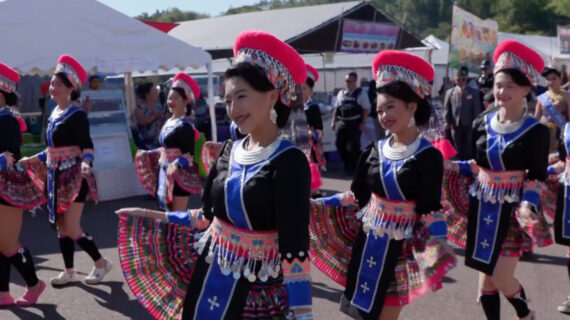
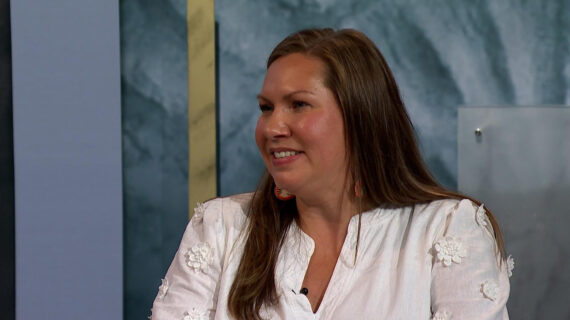
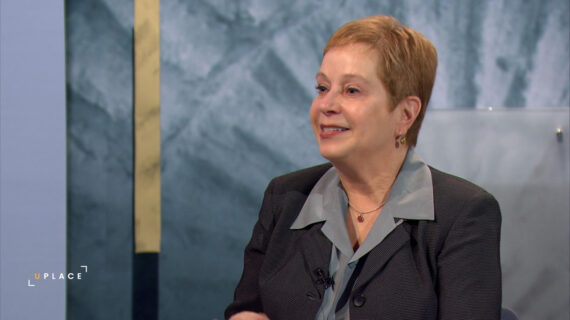

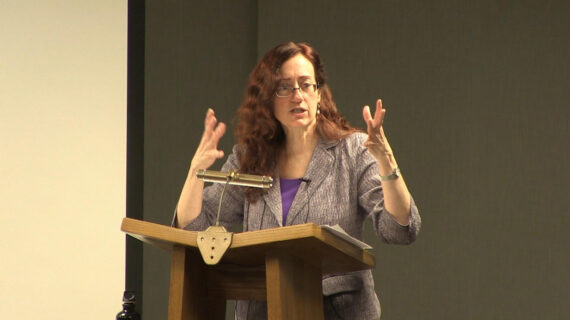

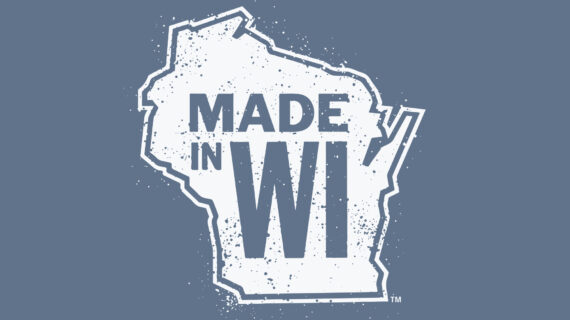

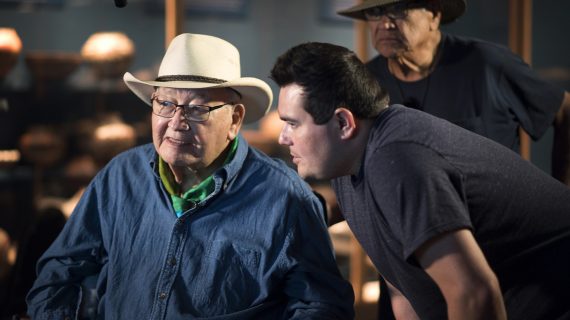


Follow Us